9 essential tips for buying an electric car
Thinking about buying an EV? Here's everything you need to know
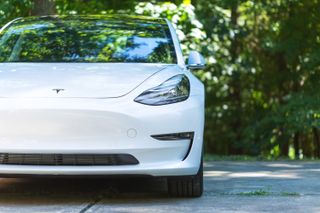
Buying an electric car can feel daunting, especially if you don’t know a great deal about the tech and what you should be looking for. Our best electric cars list is a good place to start, as is our list of the most exciting electric vehicles coming in 2022, but there’s a lot that you need to consider, including battery range, specs measured in kWh and other things gas car shoppers don’t have to worry about.
But then there are an awful lot of benefits to electric cars. Lower refuelling costs, less regular maintenance and a car that drives along so quietly it’s almost silent. Not to mention the fact you don’t need to worry about things like oil changes or spewing clouds of pollution every time you go to the store. But it still means having to make a decision on whether an EV is right for you, and which model to buy.
Thankfully, we’re here with our EV buying guide to help you figure that out.
Electric vehicle buying quick tips
Why you can trust Tom's Guide
If you’re in a hurry, here are the nine most important things to consider before you buy an electric car. And read on for a lot more valuable info to help you buy and EV.
- What features do you need to have? Modern EVs offer a smorgasbord of new and exciting technology, but it does cost extra. So only pay for features you know you’re going to use.
- Know how much range you need: Batteries are expensive, so shell out for the range you're going to use on a regular basis. The Nissan Leaf, for example, starts with 149 miles of range, while the Tesla Model S Plaid can go nearly 400 miles.
- Do you have a place to charge your EV? Can you charge at home, or will you need to use public chargers? It’s essential to have a recharge plan before you buy the car.
- Self-driving features don't make EVs truly autonomous: For example, Tesla's Autopilot is designed to enables your car to steer, accelerate and brake automatically within its lane. Active driver supervision is required.
- An EV can cost less to refuel than a gas vehicle: While the national average cost of gasoline is $2.85 a gallon, an equivalent electric eGallon only costs $1.16. That’s less than half the price.
- A home charger can be a significant investment: The national average for getting a home car charger installed is between $1,000 and $2,500. We’d recommend looking into a Level 2 ‘fast’ charger, ideally one that offers 7kW speeds.
- Check tax credits and incentives first: Depending on where you live, you may be able to recoup some of the cost of buying an EV after the fact. For example, in the U.S. the federal EV grant takes the form of a tax credit worth up to $7,500.
- Know the difference between an electric car and plug-in hybrid: A battery-powered electric vehicle (BEV) is a fully-electric car, A plug-in hybrid electric vehicle (PHEV) can be driven around using a rechargeable battery or a traditional gas tank. PHEV examples include the Mercedes e300 e, Hyundai Ioniq Plug-in and Prius PHEV.
- Should you buy used, or lease? Used EVs cost less, but come with certain caveats. Likewise leases can be beneficial if you don’t plan on keeping a car for long.
How do you plan to use your electric car?
Like any car, your main decision needs to be based on what you actually need. There’s a huge variety of electric cars on the market right now, so there should be plenty of choices depending on your needs and circumstances.
Sports Utility Vehicles (SUV) are perfect for families or people who need to transport large and bulky objects — like the latest IKEA furniture order or a couple of mountain bikes. An SUV’s size also means there’s plenty of room for passengers to be comfortable.
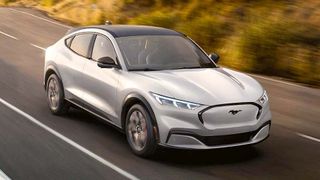
Examples of popular electric SUVs include the Tesla Model X, Tesla Model Y, Ford Mustang Mach-E, VW ID.4
Sedans are better suited for people who want a sportier-looking car with the performance to match. Sedans typically have better acceleration, top speed, and braking performance compared to other cars. They also weigh less than other kinds of cars, which helps improve your overall range and gets the most out of your battery. Sedans also tend to emphasise luxury, but still have the space for cargo and passengers.
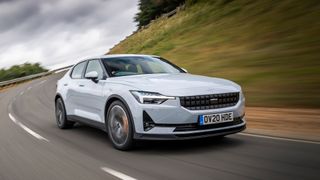
Popular electric sedans include the Tesla Model S, Tesla Model 3, and the Polestar 2.
Hatchbacks, also known as compact cars, tend to be among the cheapest electric cars you can buy. They are best suited for city driving, and for people who don’t necessarily need to ferry around a lot of people and cargo at any given time, though the ability to fold down the back seats makes the latter much easier. Recent models also have much higher range, which makes them more appealing commuter cars.

Popular electric hatchbacks include the Nissan Leaf, BMW i3, and the Mini Electric.
Trucks tend to be hardier vehicles, with plenty of versatility. Not only do they have plenty of power and cargo space to do what you need, Trucks are also well-utilized as off-road vehicles and hauling machines. Electric trucks haven’t quite taken off yet, but there are plenty of them due to arrive in 2022.
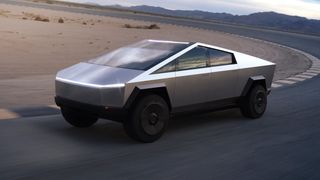
Electric trucks on the way include the Ford F-150 Lightning, the Tesla Cybertruck and the Rivian R1T.
What features do you want?
It’s been a long time since the car was just a machine for driving from point A to B. These days automobiles are packed to the brim with new tech and features for you to grapple with. That means not only do you need to figure out what car to buy, you need to figure out what tech it can come with and whether it’s actually worth paying extra for.
Because some of them, like Tesla’s $10,000 Full Self Driving package, are not going to be affordable for everyone. Even with the new $200 a month subscription for the Model S and Model X drivers.
Connectivity: Almost all electric cars have some form of in-car connectivity. The majority will support Android Auto or Apple CarPlay, which lets you plug in your phone and utilize all your usual apps and services on the car’s on-dash screen. This is especially useful for map-based navigation.
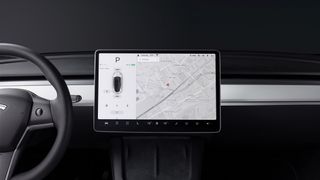
Others, like Tesla, stick to their own premium connectivity service that does mostly the same thing, albeit without relying on your phone. However there are some, particularly older cars like the original now-discontinued Nissan Leaf, that don’t offer either. So be aware of what you’re buying, and how that’s going to affect your ability to get around.
Self driving: Electric cars are also a hotbed of sci-fi-esque features like semi-autonomous driving. At a basic level these systems are little more than adaptive cruise control. You set the speed, and the car “sees' the cars in front, slowing down and speeding up in accordance with the traffic. Other basic driver assistance features bundled in with this include blind-spot detection, an emergency brake, and exterior cameras.
At the higher end you have cars that can steer themselves to a limited degree, and in some cases change lanes on the highway when you request it. These features typically end up on the more expensive EV models, which means you will pay a premium for them.
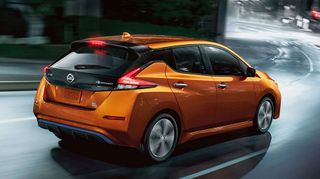
For example, Tesla’s ‘Full Self Driving’ Autopilot adds $10,000 to the cost of your car, no matter which one you choose. Likewise the price of the 2022 Nissan Leaf, currently the cheapest electric car in the U.S., ranges from $27,400 with zero autonomous features, to one that costs $43,970 and includes a larger battery (62kWh vs 40 kWh), adaptive cruise control, steering support and lane change assist.
However, it’s worth pointing out that these are not fully-autonomous self-driving cars. You still need to pay attention to the road ahead, and in the majority of cases keep your hands on the steering wheel.
Infotainment systems: Increasingly, high-end cars offer ‘infotainment screens’ that can do more than just let you navigate and control your car’s features. That includes being able to play games ranging from Tetris to AAA titles like Cyberpunk 2077.
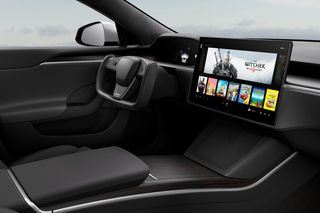
That’s of no use to the driver, of course, but it might help to keep some passengers quiet during longer trips. However, some, like Mercedes, may charge you an annual subscription fee.
Anyone hoping to buy an EV for performance reasons may also want to look into what extras cars included to help facilitate that. Like Tesla’s ‘Ludicrous Mode’ which essentially put the car into a track-ready position.
What range do you need?
Knowing what kind of car you need is only half the fight. The type of car you pick will also depend on what sort of range you need. And how much range you need will all depend on what sort of driving you plan on doing.
The battery is one of the most expensive parts of an electric car, and the bigger the battery the more you’re going to have to pay. Having better range can be useful, especially if you ever need to make longer trips, but if you’re only driving a few miles across town then you don’t necessarily need to pick up a Long Range Tesla Model 3 with 360 miles of range.

The thing to remember about range specs is that the advertised figure is the best possible outcome. The way you drive is going to impact the overall range, and how much distance you can actually get out of the car. For example, you end up driving the faster you will deplete your battery reserves, much like how driving a gas car at faster speeds uses up more fuel.
I found this out the hard way driving to my brother’s wedding in a fully charged 40 kWh Nissan Leaf. Despite the 150 range estimate when I left, driving at 70 miles per hour for close to 75 miles used up 80 percent of my battery.
If you’re only going to be making short trips, and on roads with stricter speed limits than the highway, you don’t necessarily need a big range.
EVs tend to cost more to buy, but less to maintain
Like it or not, EVs are still expensive. Or rather, they are more expensive to purchase than their gas counterparts. Thankfully, though, the initial purchase price does seem to be coming down.
Nissan, for instance, has just reduced the cost of the 2022 Leaf to below $28,000. Even Tesla, notable for selling some pricey vehicles, has a $25,000 hatchback in the works, tentatively scheduled for a 2023 release. So even if you can’t afford an EV right now, don’t be put off. Give it a few years and you may well find that an electric car is within your price range.
That being said, a higher listing price is not the only cost associated with the car. So while you may spend more initially to purchase an EV, the amount of money you’ll have to put into the car over its lifetime will be less than that of a gas-powered equivalent.
Not only is electricity cheaper than an equivalent amount of gas, electric cars generally don’t need as much maintenance. That’s because an EV doesn’t have as many parts as an internal combustion engine, which means fewer points of failure and need for regular maintenance. Likewise, EV owners get to escape the cost of things like oil changes just because EVs don’t need them.
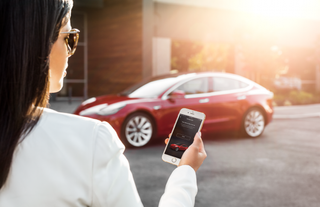
Of course EVs aren’t free of maintenance costs as a whole. In fact Car and Driver recently complained that the Tesla Model 3 in their fleet of testing cars cost as much to maintain as some of its gas powered cars. So while there is less maintenance, there is still maintenance — and some of it may be pretty costly.
However InsideEVs pointed out that Car And Driver wasn’t taking refuelling savings into account, which is where you may well see the bulk of your savings.The US Department of Energy has a tool that shows you how much cheaper it is to recharge with electricity, using a concept known as an ‘eGallon’ that lets you better compare the cost of electricity (normally measured in kWh) to liquid gasoline. So while the national average cost of gasoline is $2.85 a gallon, an equivalent electric eGallon only costs $1.16. That’s less than half the price.
The US DoE office of Scientific and Technical Information also performed a study titled Comprehensive Total Cost of Ownership Quantification for Vehicles with Different Size Classes and Powertrains. That study found that electric cars were around 40% cheaper to own than gas counterparts. And that includes the initial cost of purchase.
In the U.K. insurance broker LV found that EVs, on average, cost £1,300 less to run each year, meaning they become cheaper to own over the course of a seven year period. Though it’s worth mentioning that in the U.K. EVs are exempt from the annual car tax, which adds to the savings.
Where are you going to charge it?
You don’t necessarily need a home charger to buy an EV, but it does make life an awful lot easier.
According to Fixr, the national average for getting a home car charger installed is between $1,000 and $2,500. You just need to make sure you get the right one, and we’d recommend looking into a Level 2 ‘fast’ charger, ideally one that offers 7kW speeds. That means most cars can be fully recharged, or pretty close to it, overnight.
There’s always the possibility of plugging straight into the mains, provided you have the right adapter for your car. But that is significantly slower, even if you have a 240-volt socket handy. Asking how long it takes to charge an electric car is highly dependent on the individual car model. But even for a small 40 kWh battery, charging from 20-80% at this speed will take almost nine hours. Closer to 15 if you’re going from zero to 100%.
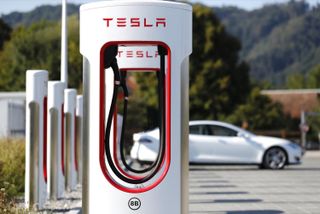
Public chargers are available, but their usefulness is going to depend on how many chargers are available in your local area, and you have to make sure you find one with the right plug or socket.
The majority of electric cars in the U.S. use what’s called a ‘Type 1’ connector for standard charging, while other parts of the world (like Europe) use a Type 2 connector. The only outlier is Tesla, which still uses a proprietary charging port in the United States.
But even if you live in an area well-served by public EV chargers, they still cost money to use. According to the U.S. Department of Energy, the national average ranges from eight cents per kilowatt hour to 27 cents per kilowatt hour. Howeve, since this is just an average figure, you may find chargers that charge more or less per kWh.
Charging at home means you’re paying the power company directly, and not passing on some profit to the charging company, who are essentially power resellers. Which will likely work out cheaper for you, even after the cost of installation.
Weather will affect the battery and range
If you live in an area with extreme weather, be it hot or cold, you will need to be aware that changes in temperature can (and will) affect the battery and the overall range of an electric car.
Cold weather makes lithium ion batteries get “sluggish,” impacting the battery’s ability to store and release electrical energy, which decreases the overall range of the car. Lithium batteries can function at temperatures up to -40 degrees (Celsius and Fahrenheit), but the sweet spot is somewhere between 15 and 26 degrees C, or 60 to 80 degrees F.
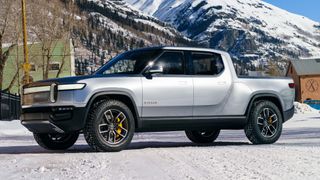
According to AAA if you ever find yourself driving an EV in temperatures around -6 degrees C (20 degrees F), you can expect your range to drop by as much as 41%. Thankfully most companies, notably Tesla, have developed thermal management systems to keep their batteries warm in cold conditions. But if you live in particularly cold climates, you’re going to want to take this into consideration.
Hot weather can also impact your range, especially considering you need to have air conditioning switched on during your drive. According to AAA, driving in temperatures of 35 degrees C/95 degrees F, your overall range can drop by up to 17%. It’s nowhere near as significant as driving in cold weather, but it is worth bearing in mind if you live somewhere like Arizona.
Temperatures above 46 degrees Celsius or 115 degrees Fahrenheit are when things get a little bit difficult where battery chemistry is concerned. But if you find yourself driving in temperatures that high, you likely have a lot bigger things to worry about.
Check the tax breaks and incentives
Right now governments across the world are quite keen on getting people to buy electric cars, and are offering incentives for those who buy electric vehicles. However, these incentives differ depending on where you live.
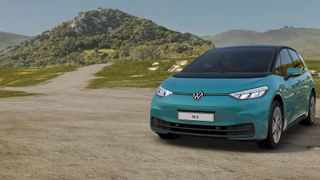
For example in the U.K the government has a grant that knocks off up to £2,500 off the cost of a low (or zero) emission vehicle at the point of purchase. But that’s only if that car costs less than £35,000, which means the likes of Tesla (whose cheapest EV is £41,000 in the U.K.) don’t qualify.
EV owners can also claim a discount of up to £350 off the cost of installing a home EV charger, and in both instances the grant is taken into account before you hand over any money.
In the United States, the federal EV grant takes the form of a tax credit worth up to $7,500. However, you have to pay the full cost of the car up front, then reclaim that money when you file your taxes. Likewise how much you get back is totally dependent on your income, how much tax you owe, and how big the car’s battery is. Here's a more detailed rundown of electric car tax credits, and where to find them.
There’s a full list of EVs and plug-in hybrids that qualify for the grant, and you can see that the majority of electric cars on the list are eligible for the full $7,500. The majority of Hybrids, which have smaller batteries, are eligible for significantly less — as low as $2,500 in the case of the Plug-in Prius.
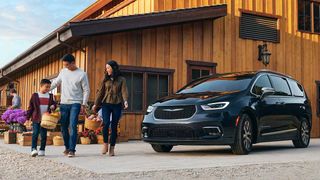
Cars also become ineligible for the grant once they become too popular. An automaker is only allowed to sell 200,000 credit-eligible cars before they become exempt. Per the list from the US Department of Energy, that affects Tesla and General Motors, both of whom are above that threshold.
There are various other incentives to buy an EV depending on the state or city you live in. Burbank California, for example, offers rebates up to $2,000 for anyone who purchases a Level 2 electric car charger (or EVSE). California will also offer up to $2,500 for purchasing or leasing an eligible hybrid or electric vehicle as part of the Clean Vehicle Rebate Project.
However, Texas, as another example, doesn’t offer any additional incentives for purchasing an EV.
Electric cars vs. plug-in hybrids
A battery-powered electric vehicle (BEV) is a fully-electric car, which relies on a battery to run and nothing more. But there are plenty of hybrid vehicles out there as well, which utilize some of the same technology but don’t entirely ditch the gas tank. A plug-in hybrid electric vehicle (PHEV) is the closest equivalent to a BEV, since it can be driven around using a rechargeable battery, or a traditional gas tank — essentially making it two cars in one.
Unlike a traditional hybrid, which burns gas to recharge, a PHEV recharges its battery the same way a BEV does: via a dedicated car charging port. Examples include the Mercedes e300 e, Hyundai Ioniq Plug-in, Ford Kuga, and the Prius PHEV —a plug-in version of Toyota’s classic hybrid.
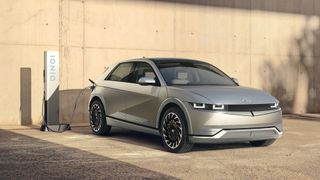
The idea is that the car will be able to use battery power for smaller journeys, but can fall back on the gas tank on longer trips when that power runs out. In effect it completely ends the whole idea of ‘range anxiety’ because you have that back-up tank of fuel that can be filled up as normal.
The only downside is that the batteries in plug-in hybrids are significantly smaller than those in all-electric vehicles, due to the need for a separate gas tank, which significantly lowers their electric range.
It’s also worth noting that plug-in hybrids have a tendency to use more gas than gas-only cars too, on account of them having to carry around the extra weight of the hybrid system. However, regularly recharging the battery and relying on electric power can still cut your running costs compared to gas-powered cars.
However when it comes to comparing prices of plug-in hybrids and BEVs, things aren’t always consistent. And how much you’re expected to pay totally depends on the car.
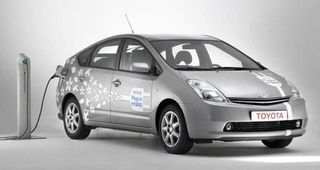
For instance a PHEV Toyota Prius starts at $28,200, which is cheaper than every other electric car currently available in the United States. Only the still-unreleased 2022 Nissan Leaf undercuts it, with it’s $27,400 price tag. However a Ford F-150 Hybrid will set you back at least $42,840, but the upcoming all-electric F-150 Lightning is due to start at $39,974.
Automakers are usually pretty eager to sell hybrid cars, so be sure to check and see there is a hybrid alternative to whatever BEV you may have been thinking about buying.
Should you buy a used electric car?
Like any car, you can usually save yourself some money by buying a used EV. However, it’s not quite as simple as rolling up to a used car lot and talking to a sales rep.
For one, there aren’t nearly as many used EVs available, on account of there not being as many EVs in general. So your options are pretty limited. Used EVs are popular among first time buyers — especially Teslas. In fact used Teslas are so in demand, there have been reports of used Teslas costing more than brand new models.
The other thing to keep in mind is that because lithium ion batteries degrade over time, a used EV likely won’t have the same capacity or range as a brand new model. The effect will depend on which car you’re looking at, what kind of battery tech it has and how well the previous owner looked after it.
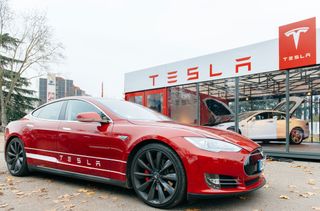
Your best option is to do some Googling on the car you’re interested in, and figure out what you should be looking for when checking out a used model. According to Tesla, its own data has shown that its cars can retain 90% of their battery capacity after 200,000 miles of driving.
You also have to consider that you won’t be getting the absolute best tech at any given time. For most people, that may not be an issue, but if you’re after the latest and best driver assistance tech, or some other hi-tech car feature, then your odds of getting that in a used car are significantly lower.
Bottom line
Swapping from a gas car to electric can feel daunting for first-time buyers, especially with all the things you need to consider. But the most important thing is not to be intimidated by the prospect of making the switch.
Of course buying an EV isn’t going to be the right option for everyone. There are a lot of great benefits that come with EV ownership, and the industry has come a long way over the past decade, but that doesn’t mean everyone is going to be able to upgrade to electric next time they buy a car.
It doesn’t matter whether the reasoning is financial, logistical, or because you don’t feel comfortable making the switch. If electricity is the right choice for you right now, great. If not, then there’s no shame in that. There will come a time when buying a car means you have to pick up an EV, but that’s still a way off, and for now the most important thing is to buy the right car for you.
- Nissan Leaf vs. Mini Electric: Which is the best EV under $30,000?
- Should you buy a used EV? 9 essential tips
- These are the 8 cheapest electric cars you can buy right now
Sign up to get the BEST of Tom's Guide direct to your inbox.
Here at Tom’s Guide our expert editors are committed to bringing you the best news, reviews and guides to help you stay informed and ahead of the curve!

Tom is the Tom's Guide's UK Phones Editor, tackling the latest smartphone news and vocally expressing his opinions about upcoming features or changes. It's long way from his days as editor of Gizmodo UK, when pretty much everything was on the table. He’s usually found trying to squeeze another giant Lego set onto the shelf, draining very large cups of coffee, or complaining about how terrible his Smart TV is.